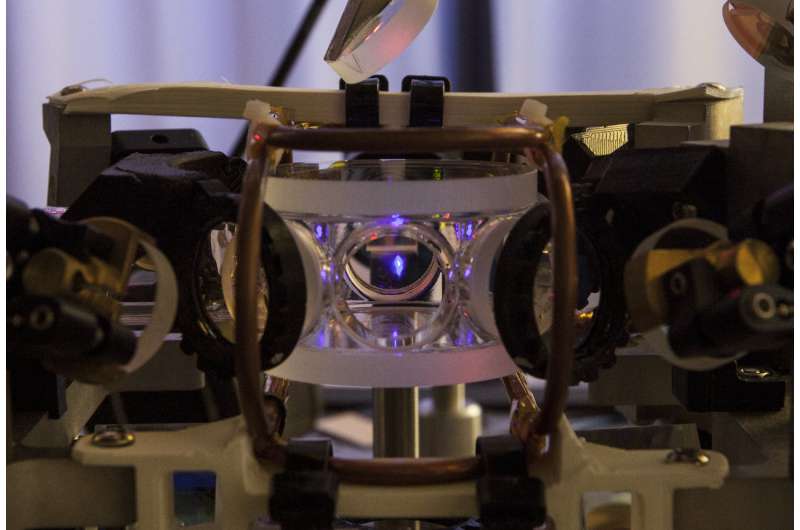Quantum memory with record-breaking capacity based on laser-cooled atoms

The emerging domain of parallelized quantum information processing opens up new possibilities for precise measurements, communication and imaging. Precise control of multiple stored photons allows efficient handling of this subtle information in large amounts. In the Quantum Memories Laboratory at Faculty of Physics, University of Warsaw, a group of laser-cooled atoms has been used as a memory that can store up to 665 quantum states of light simultaneously. The experimental results have been published in Nature Communications.
Every information processing task requires memory. Quantum memory is capable of storage and on-demand retrieval of quantum states. The key parameter of such memory is its capacity, the number of qubits (quantum bits) that the memory can effectively process. Simultaneous operation on many qubits is a key to efficient quantum parallel computation, providing new possibilities in the fields on imaging or communication.
The on demand generation of many photons remains a key challenge for experimental groups dealing with quantum information. For a widely-used method of multiplexing single-photon emitters into one network, the complexity of the system grows along with its advantages. Using quantum memory, researchers can generate a group of a dozen photons within seconds rather than years. Spatial multiplexing aided by a single-photon sensitive camera stands out as an effective way to obtain high capacity at low cost.
In the Quantum Memories Laboratory (Faculty of Physics, University of Warsaw), researchers have built such high-capacity memory. The system holds a world record for the largest capacity, as other experiments have only harnessed tens of independent states of light. The heart of the setup comprises a so-called magneto-optical trap (MOT). A group of rubidium atoms inside a glass vacuum chamber is trapped and cooled by lasers in the presence of a magnetic field to about 20 micro-Kelvins. The memory light-atoms interface is based on off-resonant light scattering. In the write-in process, the cloud of atoms is illuminated by a laser beam, resulting in photon scattering.
Each scattered photon is emitted in a random direction and registered on a sensitive camera. The information about scattered photons is stored inside the atomic ensemble in the form of collective excitations—spin-waves that can be retrieved on demand as another group of photons. By measuring correlations between emission angles of photons created during the write-in and read-out process, the researchers determined that the memory is, indeed, quantum, and that the properties of the generated state of light cannot be described by classical optics. The prototype quantum memory from Faculty of Physics at University of Warsaw now takes two optical tables and functions with the help of nine lasers and three control computers.
More information: Michał Parniak et al, Wavevector multiplexed atomic quantum memory via spatially-resolved single-photon detection, Nature Communications (2017). DOI: 10.1038/s41467-017-02366-7
Journal information: Nature Communications
Provided by University of Warsaw




















